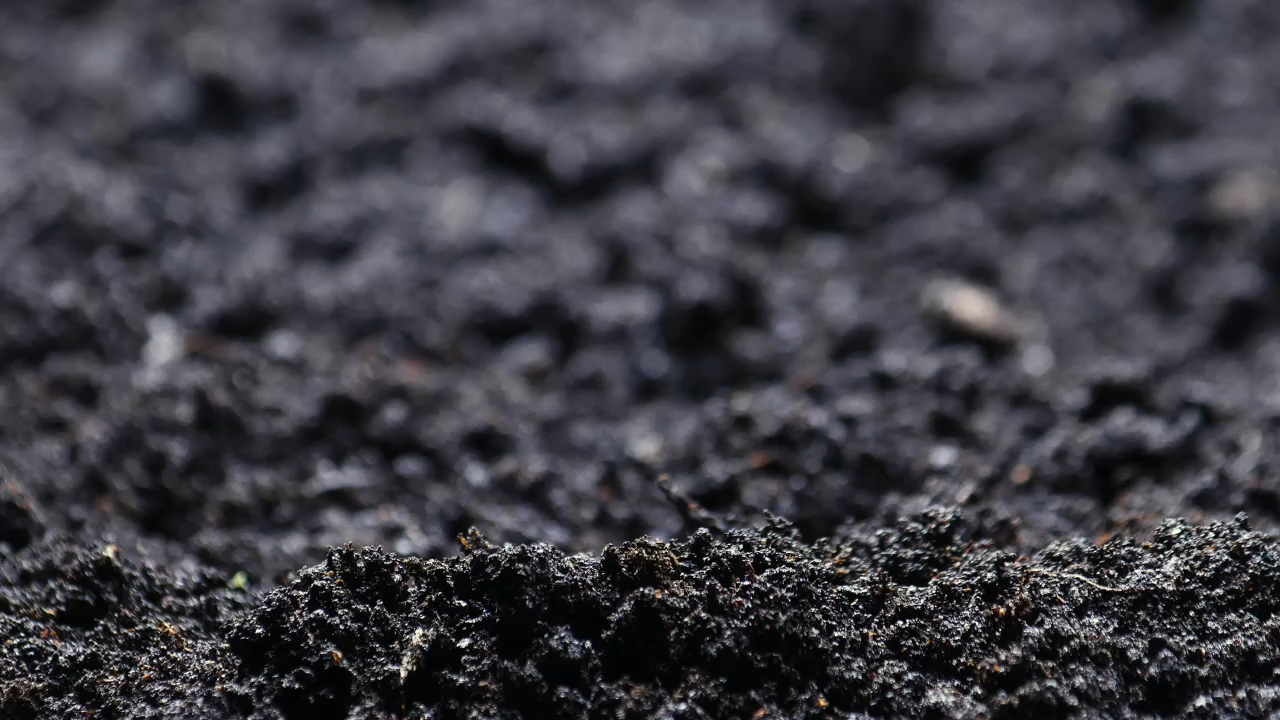
We aren’t just facing a climate crisis, but a soil one too. While global greenhouse gas emissions soar to record highs, the thin layer of topsoil on which we depend for our food is also disappearing. Thankfully, there’s an elegant solution to both challenges. It’s called biochar.
Made by heating wood and plant waste in the absence of oxygen, in a process called pyrolysis, biochar can be added to soil to improve its fertility and ability to catch and store carbon dioxide from the atmosphere. Indeed, it’s a natural means of carbon capture that’s recognised by the Intergovernmental Panel on Climate Change as a leading form of carbon sequestration technology.
As interest in biochar grows, some companies are wrongly claiming to make it. Biochar can only live up to its promise when it’s used as a circular method of carbon sequestration – unlike charcoal and bio-coal, which are produced in a linear way, with one sole function in mind. Despite this, these three products can be wrongly equated to each other.
Here’s how to differentiate between biochar and other charcoals.
Biochar
Biochar should be produced in the most environmentally responsible way possible – as part of an accredited carbon credit scheme with a full life cycle assessment completed. It should be made from a sustainable feedstock, like wood waste from regenerative forest management. Other options include agricultural by-products or food industry plant-based waste. Crucially, it should not be made from virgin first-cut wood from trees– although wood plantations that co-exist with a tree planting programme may be acceptable.
The way it’s heated in the pyrolysis process, is equally important. A true biochar production system must be certified and efficient. The heat released during pyrolysis cannot be allowed to escape – but captured and used elsewhere. This waste heat, for example, could be used for electricity generation or in district heating schemes. This forms part of the circular nature of biochar.
In terms of its properties, biochar can be made to be more porous than standard charcoal, due to its unique processing techniques. This gives it the capacity to adsorb water and nutrients that enhance soil health. Thanks to the highly controlled form of pyrolysis used in its production, it is also free from toxic chemicals or heavy metals.
Crucially, the use case of biochar needs to be enabling the long-term storing of carbon, locking it away from the atmosphere. Use cases must therefore keep this carbon locked away, while creating further environmental good. They can include soil amendments, building material substitutes and remediation of mining spoils. Avoidance use cases don’t qualify, for example where the char is used to offset coal used in steel production or when it is burned to produce heat. These use cases are reserved for charcoal or bio-coal.
Charcoal
Fundamentally, charcoal differs from biochar because its core purpose is to be an energy source – rather than a long-term means of carbon sequestration. While it is produced in a similar way to biochar, as a fuel for barbecues, grills and forges, it exists to be burnt, which releases carbon into the atmosphere, instead of locking it away.
In this context, manufacturers seldom consider the environmental credentials of feedstocks and processing techniques. Charcoal can be made from virgin wood or plants, using methods that don’t minimise air pollution or maximise heat efficiency. This means it’s often made with older technologies – like fire pits or ring kilns – that don’t prevent the release of excess heat or volatile gases. As its processing methods are less stringent, charcoal may retain toxic organic chemicals or heavy metals.
Bio-coal
Also known as synthetic coal, torrefied wood or green coal, bio-coal is a solid biofuel that offers an alternative to traditional coal. Usually, it is produced by a process called Hydrothermal Carbonisation (HTC), a thermochemical conversion process using water as a reaction medium. The problem is that HTC is an energy-intense, environmentally unsustainable production method. Moreover, like charcoal, bio-coal primarily exists to be burnt and re-release its stored carbon back into the atmosphere.
Activated Carbon
Sometimes called activated charcoal, activated carbon is made for purification purposes. For example, it is given to people who’ve ingested poison. Made to have a large surface area through its activation, its adsorption capability is high – meaning it’s effective at removing contaminants.
Activation can be done by introducing steam to remove carbon from already charred material, which opens its pores and increases its surface area. Alternatively, a source material – like wood – can be mixed with phosphoric acid to stop shrinkage, resulting in a structure with high porosity.
Overall, activated carbon has a high carbon footprint – not least because its feedstock sources can be fossil-based, like peat, petroleum, tar pitch or coal. It’s also typically also made using the high-energy HTC process.
Not all charcoals are the same
Biochar is a critical solution to the climate and soil emergencies. In the face of two of our greatest challenges, it’s a win-win. But when producing biochar, it’s important it’s being used as a method of carbon sequestration to become a carbon credit. Otherwise, it may as well just be another type of charcoal being miss-marketed. Sustainable, circular feedstocks, generating carbon credits and long term carbon-storage are hallmarks of the real thing – keep an eye out the next time someone talks to you about biochar.